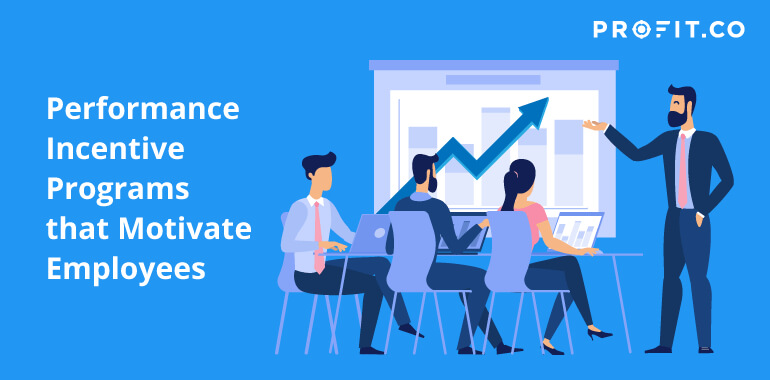Keeping employees motivated, inspired, and productive in today’s age of social media, remote work, and the uncertainty of post-COVID times is more challenging than ever. First, you’ve spent all this time recruiting and hiring. Now, you’ve got to figure out the best way to keep the people at work, doing their jobs in the best way possible.
Energy and persistence conquer all things.
Benjamin Franklin
It isn’t just about employee recognition (though it’s part of it) or gift ideas (also can be part of your incentives). It seems we never really grow out of wanting to be recognized for our “good” behavior. Incentive programs tap into this lifelong mentality.
What are Incentive Programs?
Incentive programs are the institutionalized use of things such as rewards or recognition to motivate employees to behave in a certain way or work to a certain standard.
What do you want to happen? All employers want their staff to do their work and do it well. Employers want
employees to be productive, efficient, and focused on delivering quality work.
What do employees want? They (usually) want to do a good job, but they want rewards on top of their current salary and benefits. An effective incentive program encourages “desired behavior,” for example, quality work done on time, by offering rewards and recognition.
Incentive programs come in all shapes and sizes. Depending on your company budget, you might implement an incentive program in one of two categories:
Monetary incentive programs include bonuses, merit-based raises, profit-sharing, and more. Non-monetary programs may consist of more vacation time, casual dress days, gift cards, and other options we’ll explore later.
How do Incentive Programs Motivate Employees?
Simply put, incentive programs keep employees working for your company. According to
Gallup’s 2022 State of the American Workplace report, only 21% of employees are engaged at work and 33% of employees are thriving in their overall wellbeing, most would say that they don’t find their work meaningful and don’t feel hopeful about their future.
According to the same Gallup Poll capturing the collective voice of the global workforce, employee engagement is at an all time low with the business losing trillions of dollars.
One way that employers might tackle this gap in motivation through
performance management through incentive programs. Incentive programs can help workers do their best work. Employee incentive programs work because they boost employee morale, connect desired behavior with positive reinforcement, and demonstrate that outstanding performance is recognized, rewarded, and appreciated by managers and employers.
Creating the Best Incentive Program
Now that we know employee incentive programs can work, the next step is designing the program that’s right for your employees and your company and will be most effective for the
goals that you are hoping to achieve. There are five key steps to creating a great employee incentive program.
1.Define Goals you Want to Achieve
The first step is to set the goals for your incentive program. Begin by asking yourself why you are instituting this program in the first place. Then, ask what outcomes you want to see– how will you know if the program is a success? What results would you expect to see in your employees and your organization?
2. Determine Who You are Incentivizing
Depending on the workflow of your organization and how your departments and employee hierarchies are set up, it might make more sense to incentivize entire teams rather than individual employees. This can also be a great way to foster teamwork or even friendly competition.
3. Establish and Share Rewards with Team
Based on your budget and if you would like to institute monetary or non-monetary incentives for your employees, establish what rewards will be and share these incentives with employees so they are motivated to fulfill the associated behavior.
4. Set and Distribute Program Rules & Tiers
Ensure that you set clear rules about what standards employees need to fulfill in order to earn the rewards. This eliminates any uncertainty and can avoid an awkward situation where an employee thought they were meeting expectations and expected a reward, but in reality they didn’t fulfill the desired criteria.
5. Ask for Continuous Feedback from Employees
Continuous feedback is absolutely necessary for an incentive program that works for employees. Ensure that employees are a part of the development and improvement process and make sure they feel their voices are heard and the incentives are things they actually want. This will
increase employee satisfaction and make your incentive program more effective.
10 Incentive Programs that Work
Because there are different incentive programs, let’s examine our top 5 picks for monetary incentive programs and 5 choices for non-monetary incentive programs as described by
Indeed.
Monetary Incentive Programs
1. Spot bonuses:
Small cash prizes specific to an achievement. For example, spot bonuses work with special projects.
2. Project bonuses:
Completing a project ahead of schedule or achieving a specific goal within a project is a powerful incentive.
3. Performance-based:
Typically, sales team members see performance-based bonuses.
4. Referral bonuses:
Rewarding the behavior of an employee referral provides an added benefit to the company of bringing on staff with lower recruitment costs.
5. Profit-sharing:
Since this is dependent on stock prices, it may not always be positive, but when it helps motivate staff to improve the company as a whole since their stock options will increase in value.
Non-Monetary Incentive Programs
1. More vacation time:
Not only does this encourage your employees to live a balanced life, but it also
motivates employees with minimal cost to the company.
2. Casual Fridays:
Don’t forget this applies to remote workers too! Our world may joke about only having to dress the top half for online meetings, but implementing a weekly casual dress day is a simple way to perk up your staff.
3. Wellness vendors:
Bringing in a yoga instructor or a food truck gets people moving and talking to each other in a more relaxed situation.
4. Handwritten notes:
Personal, thoughtful notes never go out of style. Encouraging your management teams and C-suite executives to participate like this can go a long way.
5. Public recognition:
Some people may be a bit shy, but an appreciative word praising their work makes employees feel good! Recognition is easy with an online employee engagement platform. For example, Profit.co has an employee engagement module that makes it easier than ever to recognize employees and offer encouragement digitally. To see how these Profit.co features work alongside our powerful OKR, performance, and task management modules,
book a free demo with us today!
Final Thoughts
Whichever incentive pieces you include in your company’s program, getting the executive level buy-in to promote the program increases your chances of success. Don’t forget to establish your goals so you can shout from the rooftops how you’ve created a program that works for the company and the employees.
As you can see, there are plenty of ways to create employee incentive programs that increase company loyalty,
improve company culture and keep your team members motivated. Following the advice in this article, you’re set up for success in creating the program within your company budget, which aligns with the company strategy for hiring and retention.




